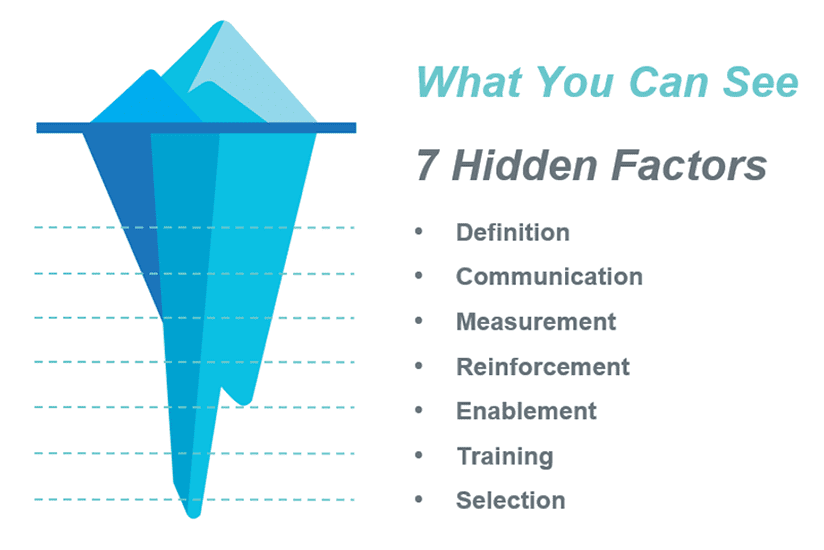
User Behavior: Looking Below the Surface
At 11p, we like to look at the big picture. Our UX process begins with a Discover phase where we partner with our customer organizations to explore hidden factors that may be influencing user behavior. Uncovering these factors allows us to identify the best solution for improving performance. Here are some hidden factors that can influence behavior and some key questions to think about for each.

Seven Hidden Factors
1. Definition is about clear performance goals. It’s about defining performance (what employees are expected to do) as well as a process (how users should be doing it).
Key questions:
- Do you have clearly defined work requirements with your organization?
- Do you have standard procedures in place?
2. Communication is next. Work requirements and employee expectations need to be clearly communicated. We often assist our customers in crafting effective messaging to ensure nothing gets lost in translation.
Key questions:
- Do employees know what to do?
- Do they understand what is expected?
- How and how often are you communicating work requirements and expectations with employees?
3. Measurement is another key factor influencing performance. It’s difficult to manage an organization’s performance if it’s not being measured.
Key questions:
- Are you measuring performance within your organization? If so, how?
- How often do you review your organization’s performance?
4. Reinforcement can be difficult to uncover but can impact employee motivation. It’s hard to change user behavior if there are negative consequences for doing the right thing.
Key questions:
- What consequences are your employees experiencing for correct behavior?
- What consequences for incorrect behavior?
5. Enablement refers to a broad category of things that help or hinder performance – things like the structure of the organization, tools or technology, information, and the physical work environment.
Key questions:
- Does your existing technology support workflow?
- Has your organization made accurate information readily available to your employees in an easy-to-use format?
- Can they quickly find what they need for on-the-job performance support?
6. Training is something a lot of people jump to when trying to fix a performance issue. For training to be the right solution, two things need to be true. First, employees need to lack key knowledge or skills. Second, those skills need to be important to their success.
Key Questions:
- Do your employees have the right skills?
- Do they need to use these skills frequently?
7. Selection is the final factor we will discuss today. This is referring to an organization’s hiring practices including the type of people entering the organization.
Key Questions:
- Do new hires want to do the work?
- Are they a good fit for your culture?
Through our proven UX process, we continue to help organizations uncover the true motivations behind user behavior. And based on those findings, we create the best solution – whether it’s communication, a new system, or a thoughtfully designed learning solution.

Written by
Deb Williams
Deb has been with Eleven Peppers Studios for seven years, working as both a User Experience Architect and a Learning Experience Designer. The source of this blog is derived from a brown bag presentation held for internal team members and Mick Magill’s ASTD presentation “High Performance Work Environment.”
